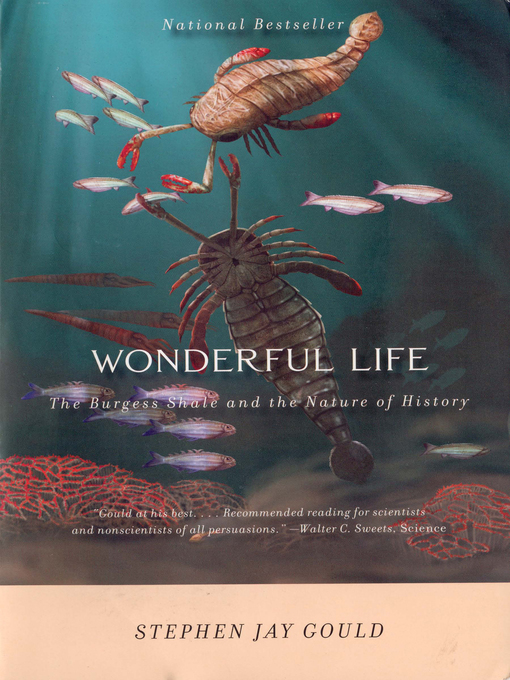"[An] extraordinary book. . . . Mr. Gould is an exceptional combination of scientist and science writer. . . . He is thus exceptionally well placed to tell these stories, and he tells them with fervor and intelligence."—James Gleick, New York Times Book Review
High in the Canadian Rockies is a small limestone quarry formed 530 million years ago called the Burgess Shale. It hold the remains of an ancient sea where dozens of strange creatures lived—a forgotten corner of evolution preserved in awesome detail. In this book Stephen Jay Gould explores what the Burgess Shale tells us about evolution and the nature of history.-
Creators
-
Publisher
-
Release date
February 3, 2014 -
Formats
-
OverDrive Read
- ISBN: 9780393245202
- File size: 8183 KB
-
EPUB ebook
- ISBN: 9780393245202
- File size: 8183 KB
-
-
Languages
- English
-
Reviews
-
Publisher's Weekly
September 12, 1990
The Burgess Shale, a small quarry in the mountains of British Columbia, opened a window on the first multicellular animals. Gould, eminent life-historian and author, introduces us to the creatures of Burgess Shale and to those who have painstakingly examined them. ``This is exciting and illuminating material on the beginnings of life,'' wrote PW. Illustrated. -
Publisher's Weekly
September 5, 1990
The Burgess Shale, a small quarry in the mountains of British Columbia, opened a window on the first multicellular animals (late Cambrian, 530 million years ago). These fossils were discovered in 1909 by America's foremost paleontologist, Charles D. Walcott, who classified them according to modern animals. More than 60 years later, three British scientists began an exhaustive re-examination of the Burgess fauna--with startling results for evolutionary theory and the history of life on earth. Presenting the revision as a play in five acts, Gould, eminent life-historian and author ( The Flamingo's Smile ), introduces us to the creatures of Burgess Shale and to the men who have painstakingly examined them. He explains Walcott's failure to recognize his greatest discovery in terms of his background, then discourses on the value of history as a scientific tool. This is exciting and illuminating material on the beginnings of life. Illustrations. BOMC, QPB and History Book Club selections. -
Library Journal
September 1, 1989
The Burgess Shale, found in the Canadian Rockies, contains an extremely important fossil fauna that includes an assortment of weird and wonderful creatures. Gould, the best-known modern exponent of paleontology and evolutionary biology, interprets, with the wit and grace his many fans expect, the significance of this 530-million-year-old fauna. His arguments entail learning some anatomy of unfamiliar creatures, but Gould gently guides the way. The book does ramble some, but the asides are so fascinating! This book is much more theoretical than Harry B. Whittington's briefer and more matter-of-fact work, The Burgess Shale (Yale Univ. Pr., 1985), another good book on the topic. This is an intellectual delight, one of Gould's best recent books. It is highly recommended for the interested layperson, as well as for students from the college level on up. BOMC, History Book Club, and Quality Paperback selections. Previewed in Prepub Alert, LJ 5/1/89.-- Joseph Hannibal, Cleveland Museum of Natural HistoryCopyright 1989 Library Journal, LLC Used with permission.
-
Loading
Why is availability limited?
×Availability can change throughout the month based on the library's budget. You can still place a hold on the title, and your hold will be automatically filled as soon as the title is available again.
The Kindle Book format for this title is not supported on:
×Read-along ebook
×The OverDrive Read format of this ebook has professional narration that plays while you read in your browser. Learn more here.


